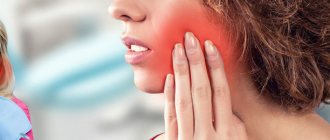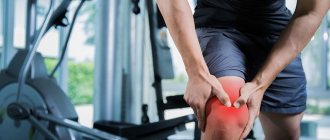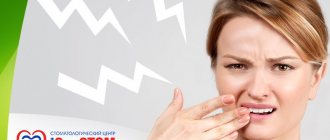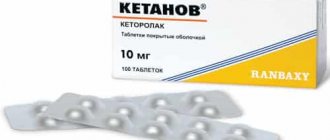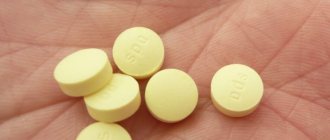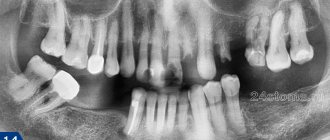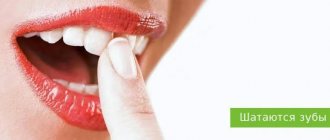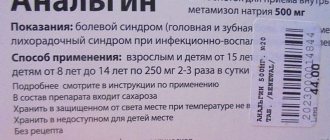Why does toothache radiate to the temple?
The degree of damage to soft and hard tissues varies. Sometimes only the enamel is affected, but more often than not, the pathology spreads to the nerve endings. It happens that diseases of the oral cavity affect the jaw joint; the temporal region and the brain suffer from abnormalities. The most common reason:
- Development of carious cavities. The process occurs against the background of a deficiency of useful minerals in the composition of crowns. First, the enamel is destroyed, and then the unit itself.
- Tooth pulpitis is an inflammation that affects soft tissue, that is, the pulp. The disease is caused by bacteria that penetrate the damaged chewing organ. Acute pain appears with the hypertrophic or gangrenous type of the disease.
- Exposure of dentin when the gum pulls away from the hard tissue.
- Crown cracks affect not only tissues, but also nerves. The pain goes in different directions.
- Improper filling, which allows infection to penetrate inside the tooth.
- Periodontitis, which affects dentin tissue, as well as osteomyelitis, an inflammatory process of the jaw bone with suppuration.
- The growth or defeat of eights gives unpleasant sensations. At the same time, the tooth hurts and radiates to the temple and ear, swelling appears on the gums, and pulsation is felt.
- Malocclusion, when the fangs are poorly positioned, the joints close incorrectly, and discomfort is felt in the temporal part of the head. Also, the reason may be wearing braces or removable dentures, which put pressure on the crowns.
The problem is not always related to the oral cavity. For example, pain is caused by irritation of the trigeminal nerve, especially its 2 or 3 branches. It happens that the clinical picture of some diseases overlaps with others, for example, infectious diseases of the ears. Inflammatory processes can affect masticatory organs with removed nerves. In such a situation, the patient complains that the pain spreads to the entire oral cavity. After all, all systems in the body are interconnected. Injury to one causes discomfort in neighboring organs.
Pain in left temple
General information
Pain in the left temple is one of the most common complaints with which patients turn to a neurologist. Epidemiological studies show that more than 70% of the population in developed countries complain of episodic or chronic headaches in the left temple.
However, this figure does not reflect the true state of affairs, since many patients do not go to doctors, self-medicating or not wanting to be examined for fear of detecting a more serious pathology. Often such patients, periodically experiencing headaches in the left temple , do not visit doctors; more than half of them take over-the-counter analgesics, often abusing the medications. This leads to the development of dangerous side effects (gastrointestinal disorders, liver and kidney damage, allergies).
Causes of pain in the left temple
Headaches in the left temple may be associated with impaired tone of the cerebral vessels of the arterial and venous beds. In young people, they can be symptoms of autonomic dysfunction, migraine, and increased intracranial pressure. In older age, these are the initial manifestations:
- arterial hypertension;
- cerebral atherosclerosis.
Provoking moments can be changes in weather, mental, emotional and physical overload. In this case, heaviness in the head and pressing, throbbing pain in the back of the head or temples are characteristic. Infectious diseases (various, including influenza, sore throat and many others) cause severe pain in the left temple. Intoxication (that is, poisoning) is also possible, the most familiar of which is alcohol intoxication. Psychogenic headaches can be the root cause of pain in the left temple. As a rule, “nervous” headaches are an aching, dull sensation that occurs either in the temple, then in the back of the head, or somewhere inside. irritability increase . Patients complain of general discomfort in the head, which makes it difficult to gather thoughts and concentrate. Patients are also haunted by a feeling of anxiety. Migraine and cluster pain are independent diseases, the main symptom of which is a severe acute headache covering one half of the head. At the same time, shiny dots (“spots”) appear before the eyes. Some people experience increased sensitivity to smells, tastes, and various external stimuli during an attack.
Subsequently, patients complain of pain in one half of the head, pain in the temple , radiating to the eye. If untreated, the pain spreads throughout the head, and nausea and vomiting often occur. Migraine headaches may be accompanied by photophobia and general weakness. Suffering lasts from 30 minutes to several hours. If the attack drags on for several days, it can end in a migraine stroke. In women, migraine is usually associated with the menstrual cycle and first makes itself felt during puberty - a period of hormonal storms. During pregnancy, the frequency of attacks decreases; after childbirth, migraines may go away forever. Due to hormonal disorders , for example, during menopause. Headaches in the left temple of unknown etiology. Temporal arteritis , a rare disease in which the walls of the temporal arteries become inflamed, causes excruciating, severe, throbbing pain in the left temple. Pain in the left temple often indicates disruption of the cranial and spinal nerves. Headache in the left temple is one of the most common symptoms of temporomandibular joint pathology. Typically, headaches due to pathology of the temporomandibular joint are located in the left temple, the back of the head, and even the shoulders (shoulder blades). Jaw clenching and teeth grinding may be symptoms of temporomandibular joint disorder; these symptoms cause muscle pain, which may be the cause of headaches. A slipped TMJ disc can also cause pain in the joint, which often radiates to the temples, forehead, or neck. These headaches are often so severe that doctors mistake them and treat them (without much success) as migraines or brain disorders .
Diet
Foods and drinks containing monosodium glutamate, which is a flavoring additive found in many processed foods; It is believed to be the cause of severe headaches. In addition, these foods in your daily diet can cause difficulty breathing and tension in the face and jaw. Pain occurs statistically in 10-15% of the population. Headache may appear 20-30 minutes after ingestion of glutamate . The pain is characterized by throbbing, dull and throbbing pain in the temple area and painful sensations in the forehead area. Products containing monosodium glutamate:
- Chinese cuisine;
- canned and dry soups;
- roasted nuts;
- processed meat;
- turkey in its own juice;
- gravies, sauces;
- some types of potato snacks and chips;
- spices and seasonings.
With a diet containing foods rich in nitrites , throbbing pain in the temple area may also occur. As a rule, half an hour after nitrites enter the body with the following food:
- Canned ham
- corned beef;
- hot dogs;
- salami;
- bologna;
- bacon;
- smoked fish.
Chocolate is one of the most powerful migraine triggers. Eating chocolate can provoke the development of hypoglycemia. Chocolate also contains caffeine, which can trigger migraines , and phenylethylamine in chocolate causes vasoconstriction, which leads to headaches in the temple area.
Firstly, chocolate provokes hypoglycemia because it contains sugar, and also because cocoa beans have a mild hypoglycemic effect. Secondly, chocolate contains caffeine, a migraine trigger . Thirdly, it contains finylethylamine, which, being an amine, causes vasoconstriction and, as a result, a headache in the temple area. It is best to limit your consumption of these foods if you notice these symptoms after eating them. If pain in the temple area is regular, it makes sense to seek help from a professional neurologist.
Finding the cause – who to contact?
The best decision when you are overcome by toothache is to go to the dentist. It will relieve the patient from unpleasant discomfort and also eliminate the risk of complications. According to indications, treatment of wisdom tooth caries will be carried out. Often, eights cause a lot of trouble for the patient, and he agrees to extraction. When surgery is not required, the problem of caries should be eliminated. It's better to do this at an early stage. Of course, you can take a painkiller, but it has a temporary effect. If the provoking factor is not oral pathology, gently visit a neurologist, ENT doctor, or therapist.
Today in pharmacies there are many sprays, tablets, and powders that will relieve pain for a while. They are used if it is not possible to see a doctor. You can use folk recipes. Usually, healers advise rinsing your mouth with a decoction of oak bark, sage, and chamomile. The ingredients are poured with boiling water, left for 20 minutes, and filtered. The rinse is ready. Propolis tincture and anti-inflammatory drops have a good effect. Essential oils must be diluted before use so as not to cause harm to the mucous membrane.
Pain in the temple area
Pain in the temple area is one of the most common complaints with which patients turn to a neurologist. Modern research shows that more than 70% of the population of developed countries complain of episodic or chronic headaches in the temple area. However, this figure does not reflect the true state of affairs, since many patients do not go to doctors, self-medicating or not wanting to be examined. This leads to the development of dangerous side effects, namely:
- liver damage;
- kidney damage;
- allergies;
- gastrointestinal disorders.
Causes of pain in the temple area
Headaches in the temple area may be associated with impaired tone of the cerebral vessels of the arterial and venous beds. These may be symptoms:
- Autonomic dysfunction;
- migraine;
- increased intracranial pressure.
In older age, these are the initial manifestations of arterial hypertension and cerebral atherosclerosis. Provoking moments can be a change in weather, mental, emotional and physical overload. In this case, heaviness in the head and pressing, throbbing pain in the back of the head or temples are characteristic. The causes of pain in the temple area can be:
- Infectious diseases (various, including influenza, sore throat and many others);
- intoxication (that is, poisoning), the most familiar of which is alcohol;
Psychogenic headaches are “nervous” headaches, aching, dull, sensations that arise either in the temple, then in the back of the head, or somewhere inside. This increases irritability and fatigue. Patients complain of general “discomfort in the head,” which makes it difficult to gather thoughts and concentrate, plus a feeling of anxiety. Migraine and cluster pain are independent diseases, the main symptom of which is a severe acute headache covering one half of the head. At the same time, shiny dots (“spots”) appear before the eyes. Some people experience increased sensitivity to smells, tastes, and various external stimuli during an attack. Subsequently, patients complain of pain in one half of the head, pain in the temple, radiating to the eye.
If untreated, the pain spreads throughout the head, and nausea and vomiting often occur. Migraine headaches may be accompanied by photophobia and general weakness. Suffering lasts from 30 minutes to several hours. If the attack drags on for several days, it may end in a migraine stroke; In women, migraine is usually associated with the menstrual cycle and first makes itself felt during puberty, a period of hormonal storms. During pregnancy, the frequency of attacks decreases; after childbirth, migraines may go away forever. The causes of pain in the temples can be caused by the following reasons:
- Hormonal disorders during menopause;
- headaches in the temple area of unknown etiology;
- temporal arteritis.
It is worth noting that temporal arteritis is a rare disease in which inflammation of the walls of the temporal arteries occurs, causing excruciating severe throbbing pain in the temple area.
Pain in the temple area often indicates disruption of the cranial and spinal nerves. One of the most common symptoms of temporomandibular joint pathology . Typically, headaches due to pathology of the temporomandibular joint are located in the temple area, the back of the head, and even the shoulders (shoulder blades).
Jaw clenching and teeth grinding may be symptoms of temporomandibular joint disorder; these symptoms cause muscle pain , which may be the cause of headaches. A slipped TMJ disc can also cause pain in the joint, which often radiates to the temples, forehead, or neck. These headaches are often so severe that doctors mistake them and treat them as migraines or brain disorders.
Diet
Foods and drinks containing monosodium glutamate, which is a flavoring additive found in many processed foods; It is believed to be the cause of severe headaches. In addition, these foods in your daily diet can cause difficulty breathing and tension in the face and jaw. Pain occurs statistically in 10-15% of the population. Headache may appear 20-30 minutes after ingestion of glutamate . The pain is characterized by throbbing, dull and throbbing pain in the temple area and painful sensations in the forehead area. Products containing monosodium glutamate:
- Chinese cuisine;
- canned and dry soups;
- roasted nuts;
- processed meat;
- turkey in its own juice;
- gravies, sauces;
- some types of potato snacks and chips;
- spices and seasonings.
With a diet containing foods rich in nitrites , throbbing pain in the temple area may also occur. As a rule, half an hour after nitrites enter the body with the following food:
- Canned ham
- corned beef;
- hot dogs;
- salami;
- bologna;
- bacon;
- smoked fish.
Chocolate is one of the most powerful migraine triggers. Eating chocolate can provoke the development of hypoglycemia. Chocolate also contains caffeine, which can trigger migraines , and phenylethylamine in chocolate causes vasoconstriction, which leads to headaches in the temple area.
Firstly, chocolate provokes hypoglycemia because it contains sugar, and also because cocoa beans have a mild hypoglycemic effect. Secondly, chocolate contains caffeine, a migraine trigger. Thirdly, it contains finylethylamine, which, being an amine, causes vasoconstriction and, as a result, a headache in the temple area. It is best to limit your consumption of these foods if you notice these symptoms after eating them. If pain in the temple area is regular, it makes sense to seek help from a professional neurologist.
Preventive measures
When a tooth hurts and radiates to the temple, a doctor will help. In order to prevent such a situation, you need to follow simple rules.
- Practice good oral hygiene. Brush chewing organs twice a day.
- Choose the right brush and toothpaste, rinse your mouth after eating, and use floss.
- Regularly visit the dentist for preventive examinations. Typically, they are recommended twice every 12 months. Come to the doctor even when nothing bothers you.
- If pain occurs, you should immediately consult a doctor. There is no need to wait for complications to appear.
Such simple care gives excellent results, improves the quality of life, and prevents dangerous diseases. Regular sanitation is the key to dental health. If you have persistent migraines that do not go away with therapy, you need to see a dentist for a diagnosis.
